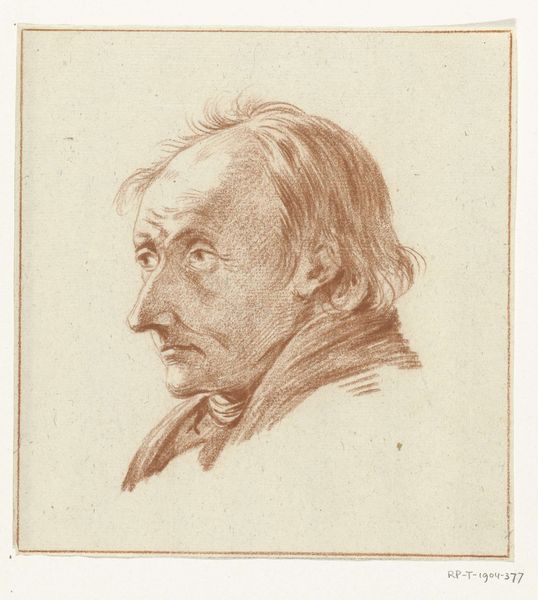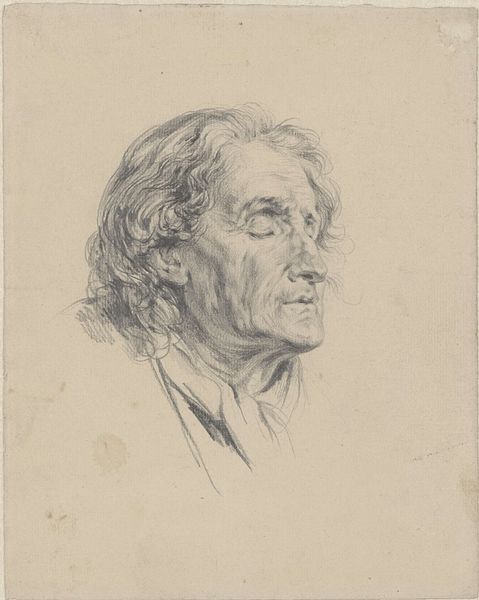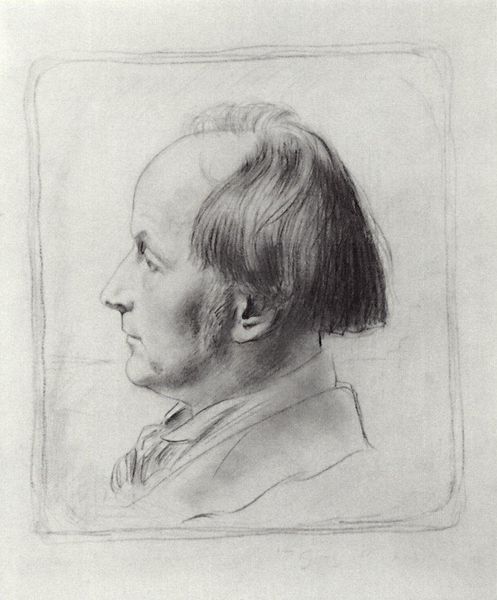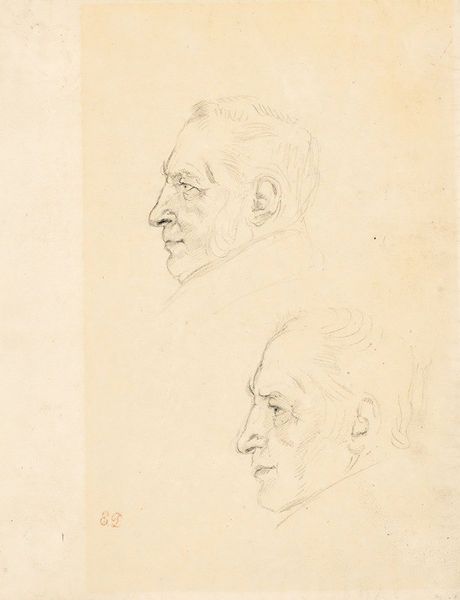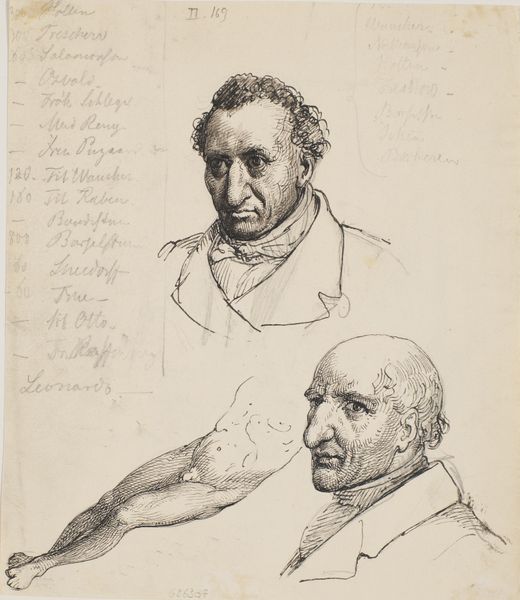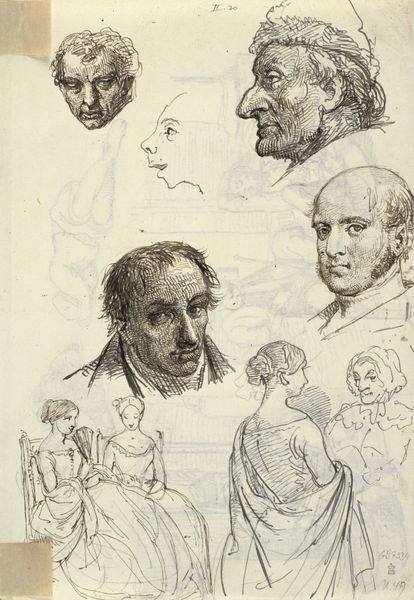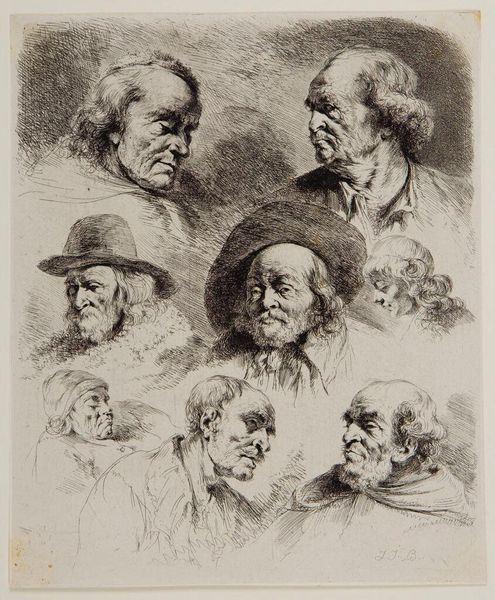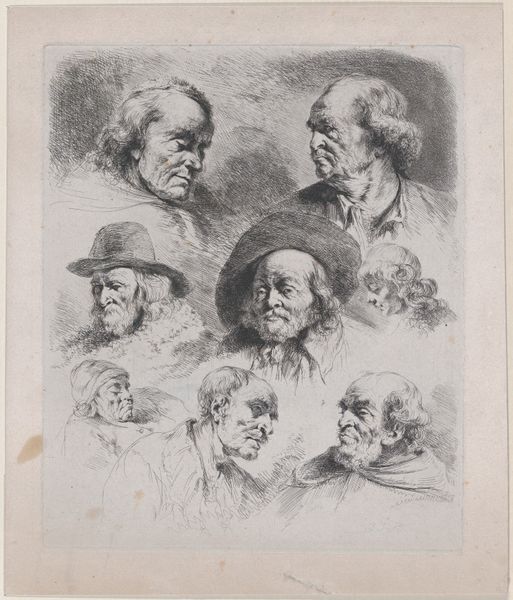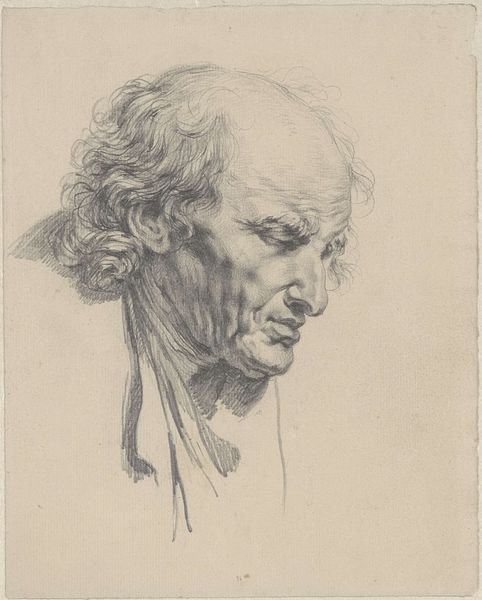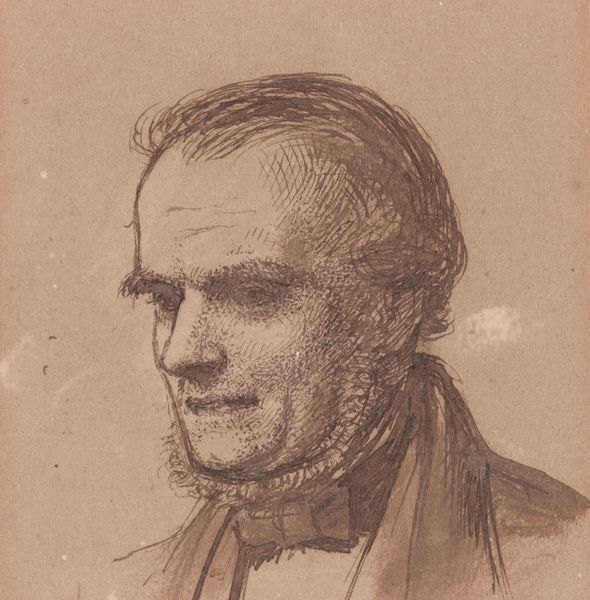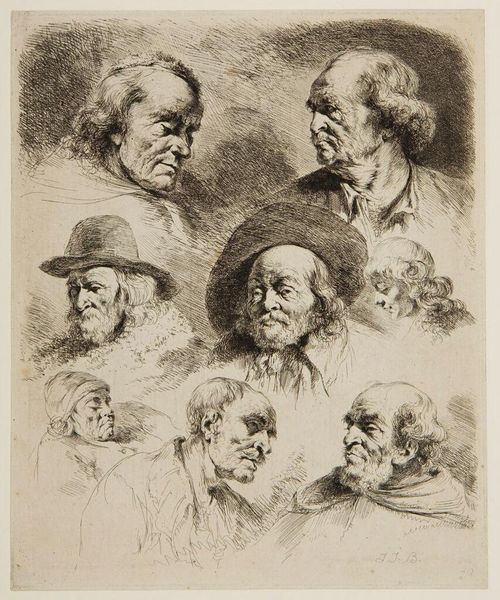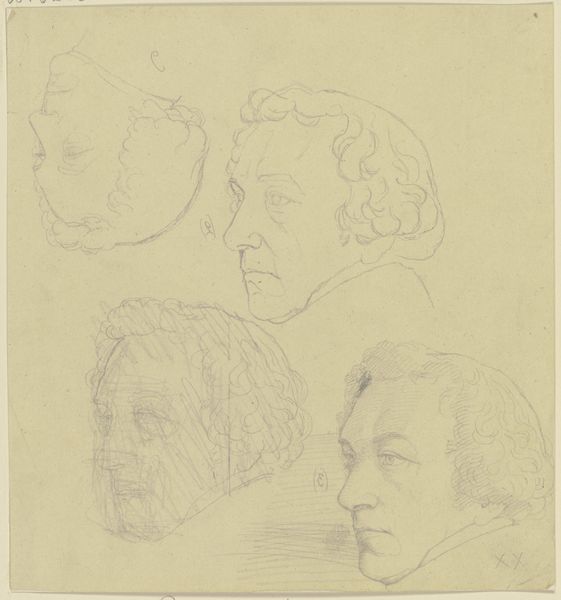
Drie studies van het hoofd van een oude man en een hand Possibly 1812
0:00
0:00
drawing, pencil
#
portrait
#
pencil drawn
#
drawing
#
amateur sketch
#
toned paper
#
facial expression drawing
#
light pencil work
#
neoclassicism
#
pencil sketch
#
figuration
#
personal sketchbook
#
pencil drawing
#
pencil
#
portrait drawing
#
pencil work
Dimensions: height 318 mm, width 203 mm
Copyright: Rijks Museum: Open Domain
Curator: So, here we have "Three Studies of the Head of an Old Man and a Hand," possibly from 1812, attributed to Abraham Johannes Ruytenschildt. It’s a pencil drawing on what looks like toned paper. Editor: Mmm, it feels...intimate, doesn't it? Like catching someone in a moment of private contemplation. The ochre wash of the paper lends a warmth that’s at odds with the austerity of the Neoclassical style. Curator: Yes, the Neoclassical influence is there in the clean lines and the almost classical features of the subject, but there's a definite sketch-like quality about it that departs from a strictly academic exercise. Ruytenschildt's use of pencil gives a softness to the features. Note how he captures the light on the forehead, and then deepens the shadows around the eyes and mouth. Editor: It’s compelling because you get this sense of vulnerability. Three iterations of an older gentleman in his quieter moments and then almost a self portrait with his rendering of the hand. What was the societal attitude toward ageing at that time, and how did this affect representation? I wonder, how much of the drawing reveals societal attitudes toward ageing and perhaps an almost obsessive scrutiny toward male experience? Curator: Ageing as a loss, a descent into disrepute was something a lot of portraiture sought to deny at the time through glorification. I find it quite liberating here because the artist has created an informal character study devoid of idealised forms. But what truly captivates me is the placement of the hand: the man holding a note. It gives an impression the subject has maybe received a poignant letter or a call to action, hence his moment of introspection. Editor: The artist may be reminding us to not simply look, but really *see* each individual. It makes me reflect on how representation often denies nuance and complexity. So, thanks Ruytenschildt for reminding us to look beyond the image! Curator: Well said. Thanks to this intimate peek into history we have witnessed, the human condition really never changes.
Comments
No comments
Be the first to comment and join the conversation on the ultimate creative platform.
